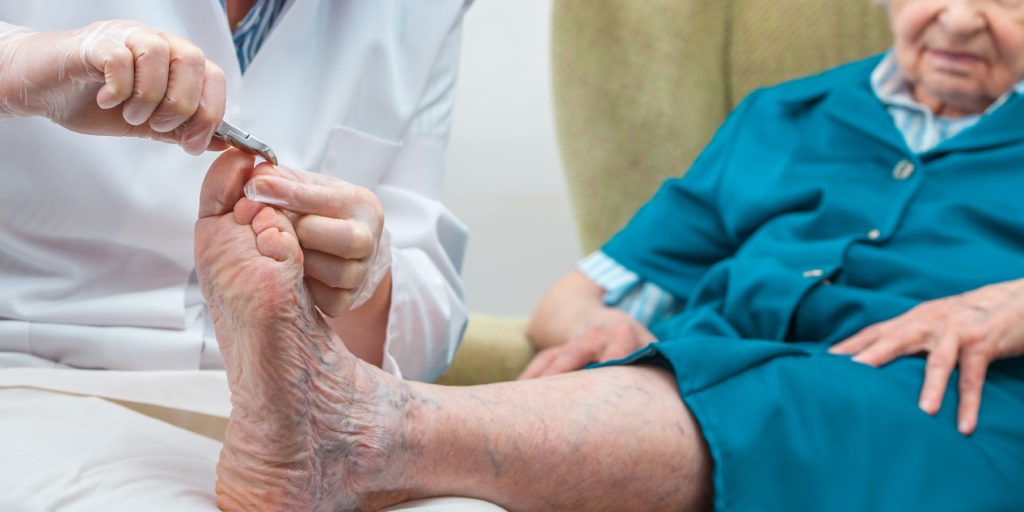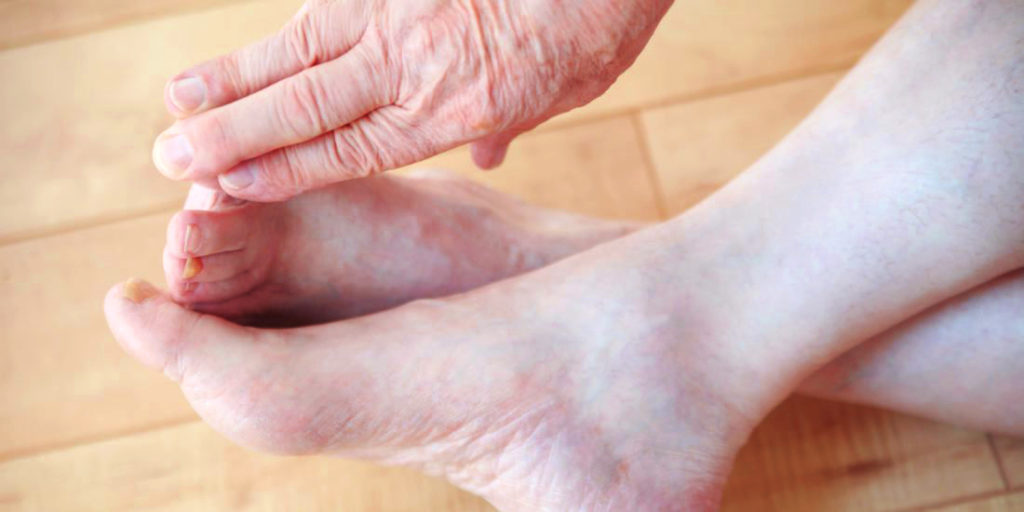Caring For Aging Feet
Quite a number of my patients come in with the mindset that their feet have always been a particular shape or a specific size and therefore will remain that same form until the end of their days.
However, many things can cause changes in the shape, size and movement patterns of your aging feet – including injury, surgery, pregnancy, and other significant weight changes.
As we age, we lose strength; this isn’t necessarily for lack of trying but is simply the way the muscular system breaks down. When our feet lack strength, they tend to flatten out. Even previously flat feet can become even more flattened or have more pronounced degrees of movement.
The Proper Fit
Have a specialist properly fit you when you are purchasing new shoes. There should be half to a full thumb’s width worth of space between the end of your longest toe and the end of the shoe. Having a shoe with good cushion is also important as the natural fat pads that cushion our feet tend to diminish as we age.
Because of the decreased fat pads, and increased strain of the plantar fascia and Calf-Achilles complex, people who are older, are at a higher risk of developing plantar fasciitis. Rolling your foot over a foot massage ball is an easy way to reduce tension through the plantar fascia.
Maintaining Foot Care Regimens
If you have mobility issues and are unable to bend down or reach your feet, trimming your toenails and caring for callouses and corns can be a challenge. There are foot care nurses who can help you with this; some will even do home visits.

Melody’s House Calls is a Lower Mainland-based company consisting of Registered Nurses, Licensed Nurses, Care Aides and other paraprofessionals. They can assist in foot care concerning ingrown toenails, calluses/corns, and diabetic feet.
Also, make sure you keep your feet properly moisturised as dry/dehydrated skin becomes more prevalent as we age. Often dry, cracked skin can become painful or uncomfortable.
Greater Risk of Falling
Along with strength, we also lose balance as we get older. According to the Public Health Agency of Canada, 256,011 Canadians older than 65 years old reported experiencing a fall-related injury in 2009 and 2010; women are at a greater risk of falling than men are.
If we can help the balance, timing, and placement of your feet, we can potentially reduce the likelihood of falling. We can accomplish this with custom orthotics, over-the-counter insoles, and wide-base footwear.
Decreasing Circulation
Lastly, our circulation can decrease as we age. This, along with other age-related conditions such as varicose veins, diabetes, heart disease and changes in blood pressure.
Wearing compression socks is an effective way to promote proper circulation. Compression socks are typically graduated, so there are more compressive around the ankles and become less as they go higher up the leg. They typically come in a knee-high sock or stocking, or a full pantyhose for ladies.
The tight, compressive fit mimics the calf muscle pumping blood back to the heart. Wearing compression socks daily – or at least when sedentary for extended periods of time – will help with circulation, cramping, and fatigue in the legs.
For More Information
Read more about Foot Health on the Kintec Blog, where you can find many articles about caring for feet win different conditions.
Kristin Ohm-Pedersen, BHK, C. Ped (C)
Kintec Pedorthist

Sorry, the comment form is closed at this time.